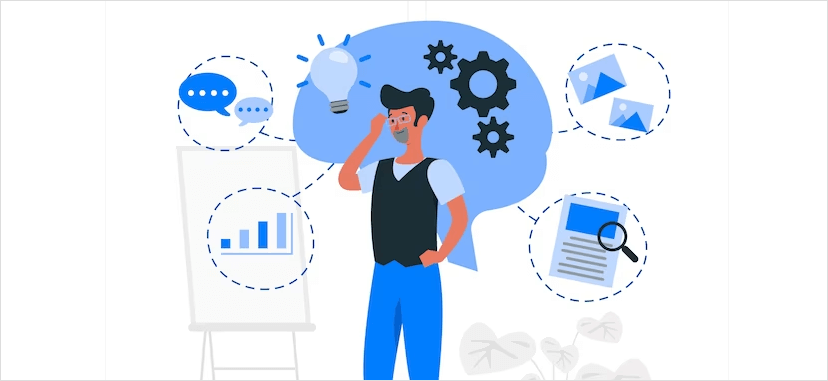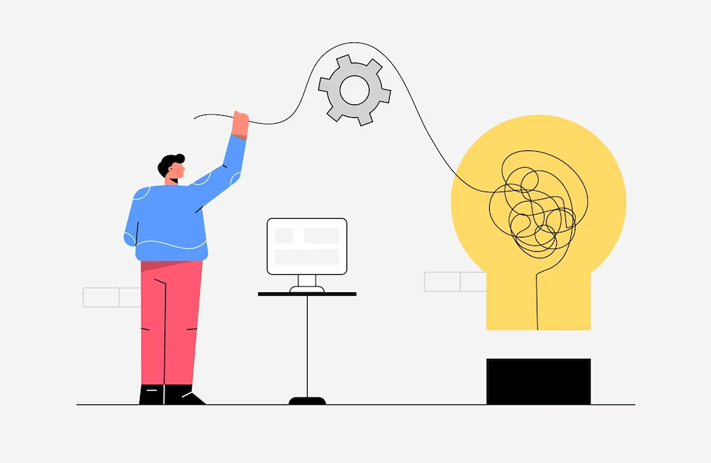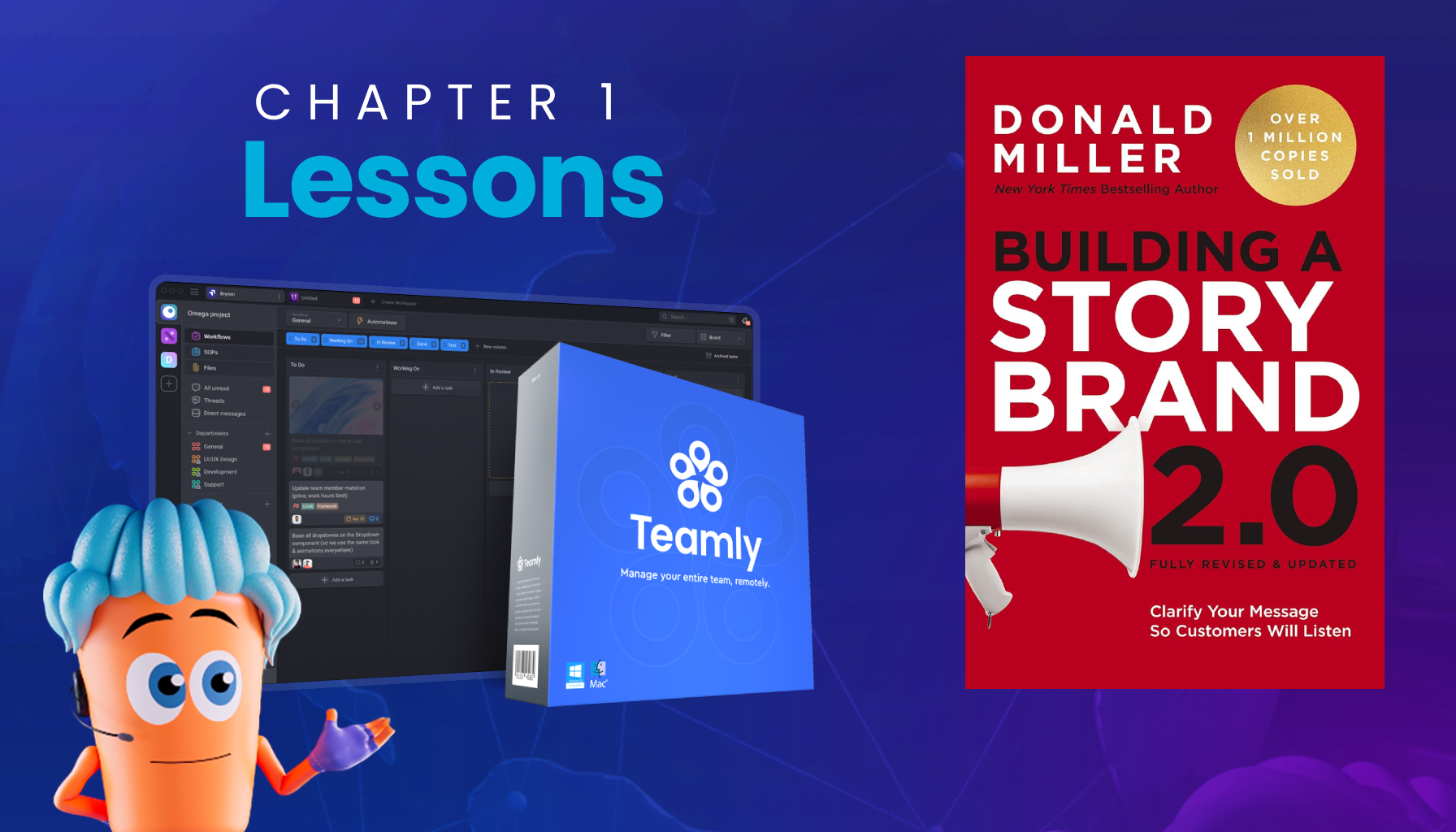
Click the button to start reading
Unleashing the Power of Problem Framing: Defining, Understanding, and Tackling Issues Effectively
Problems permeate every field, from constructing rockets to baking scones. They’re the irritating interruptions that impede our smooth workflows, the unexpected detours disrupting our well-planned projects. Regrettably, no magical solution exists to keep them at bay.
But fret not; you’re not alone in the battle against these project hurdles. More importantly, the struggle you face in addressing them may not stem from a lack of skills or ideas but rather from an unclear definition of what the problem genuinely is. Here we introduce problem framing—a concept that might just become your next secret weapon.
In this shared journey, we’ll delve into the power of problem framing, and by the end of this guide, you’ll be equipped with a fresh perspective on problem-solving. You’ll learn how to redefine problems, steer clear of the common pitfalls in formulating problem statements, facilitate productive discussions, and much more.
Essentially, we’re going to take that intimidating, vague problem and place it in a distinct frame. By illuminating its nuances, you’ll be able to tackle it with a novel, informed approach, turning confusion into clarity. So, are you ready to frame your way to better solutions? Let’s get started.

What’s Problem Framing?
Consider launching a new product in your business. Have you ever tried doing it without defining the problems you’re solving for your customers? It can feel like throwing darts in the dark.
That’s where problem framing steps in. Much like the target in a dart game, problem framing offers an overview—context—of your aim. It allows you to step back, see the larger picture, and understand the actual problem you’re dealing with.
At its core, problem framing is a process that helps you gain clarity about the problem you’re addressing. Why is it essential, you might ask? Clarity breeds understanding, and understanding generates solutions. You can’t accurately target what you can’t see, can you?
But that’s not all—problem framing also cultivates collaboration and communication within teams, ensuring everyone is aiming for the same target. No more misinterpretations, no more conflicting approaches. Instead, you achieve shared understanding and focused, collective action.
Time to Frame: When Should We Bring Out the Canvas?
Problem framing is most effective at the onset of a project. It’s your roadmap, your GPS, steering your project through the maze of potential challenges.
However, it’s not a one-off process. Revisiting the problem frame throughout the project helps you monitor progress and pivot when necessary. Remember, circumstances change, and so can problems. It’s about staying adaptable and ready to redraw the frame when required.

Crafting the Cornerstone: Formulating an Impactful Problem Statement
You’ve Got This: The Art of Creating Robust Problem Statements
Consider the initial step in developing a new product: identifying the problem your product will solve. It sets the tone for everything that follows. Your problem statement is your guiding light, directing your project and providing direction.
So how do you create one that hits the mark?
- Define the problem, not the solution: Your problem statement should describe the issue, not imply potential solutions.
- Stick to the facts: Guesswork and beliefs have no place in your problem statement. Keep it factual and objective.
- Be clear and concise: Lengthy descriptions are unnecessary. Be succinct.
- Make it measurable: Quantifying the problem aids in tracking progress and determining when the issue has been resolved.
Don’t Fall for These: Common Mistakes in Crafting Problem Statements
Creating problem statements isn’t always smooth sailing. There are pitfalls to avoid and traps to sidestep. Below, we delve into the most common missteps people make and how to steer clear of them.
Overgeneralizing
It’s easy to get lost in generalities when crafting problem statements. Vague, broad statements might seem appealing, as they cover a wide range of potential issues, but this lack of specificity can lead to confusion and misinterpretation.
Specificity is your friend. It clarifies what the problem really is, creates a shared understanding within your team, and allows for more targeted solutions.
For instance, instead of saying “Our company’s sales have been poor”, you could say, “Our company’s online sales have dropped by 20% in the last quarter”. This statement is not only specific but also measurable, allowing you to gauge your problem-solving efforts effectively.
Ignoring the Actual Problem Condition
One common mistake is formulating problem statements based on an idealistic or desired state rather than the actual problem condition. The issue with this approach is that it paints a picture of where you want to be without addressing where you currently are.
A problem statement should be rooted in the present reality, outlining the current condition or circumstance that needs improvement. For example, instead of saying “We need to be the number one supplier in our market”, a more grounded problem statement might read, “Despite having superior products, we are currently the third-largest supplier in our market due to a lack of brand awareness”.
Venturing Beyond Scope
Another common pitfall is extending the problem statement beyond the scope of the actual problem. It’s natural to want to solve all related issues at once, but it’s important to keep your problem statement contained within the actual scope of the problem at hand.
Consider this scenario: Your business is facing issues with customer service wait times. While it might be tempting to include related issues like customer satisfaction ratings or customer retention rates, it’s crucial to focus solely on the wait times in your problem statement.
A more effective approach would be to say, “Our customers are experiencing wait times of over 10 minutes, which is above our company’s established target of 5 minutes”. This way, your problem statement is focused, concise, and within scope.

A Walkthrough: Using the Problem Framing Canvas
The Canvas in Action: How to Use It
Stepping into the world of problem framing, it’s like being handed a brand new artist’s canvas. It’s spotless, full of potential, but it’s also a bit daunting. So how do you go from a blank slate to a complete, useful tool for tackling problems? Here’s the process.
Start with context. This is where you paint the background of your problem, the conditions and circumstances surrounding it. It’s about providing a vivid, comprehensive image that sets the stage for everything else. As if you’re sketching a sunset, you wouldn’t just say “it’s red”; you’d describe the warm hues, the fading light, the silhouettes of the trees. It’s the same with your problem’s context—don’t skim on the details.
Next, dive into the evidence. These are the hard facts, the irrefutable truths about your problem. They’re the bold strokes that bring shape and structure to your image. Be thorough and meticulous here. Each fact you gather adds more clarity and substance to your problem frame.
Once you’ve got your facts down, it’s time to explore the impacts. This is the color you add to your picture, the elements that evoke emotions and urgency. Show how the problem affects stakeholders. Highlight the consequences of not addressing the issue.
Lastly, craft a compelling problem statement. This is your masterpiece’s title, the concise summary that encapsulates all you’ve painted. It’s the focal point, the phrase that captures the essence of the problem you’re solving.
Expert Insights: Unlocking Your Canvas’s Potential
Your canvas is more than a one-dimensional display—it’s a living, evolving tool that fosters innovation and collaboration.
The trick to unlocking its full potential lies in:
- Engaging in discussions: Don’t just look at your canvas—step inside it. Encourage your team to delve into its details, to question, analyze, and converse. It’s through these interactions that new ideas are born and unique solutions are found.
- Inspiring solutions: Use your canvas as a source of inspiration. It holds the essence of your problem and the key to its resolution. When approached with an open mind, it can trigger creative problem-solving and encourage out-of-the-box thinking.
- Fostering collaboration: The canvas is a shared space, a common ground that brings diverse minds together. By exploring the problem collectively, your team can pool their expertise and foster a collaborative environment.
- Remaining adaptable: Remember, your canvas is not a static entity. It evolves, adapts, and changes as your understanding of the problem deepens. Don’t be afraid to redraw, repaint, or even start from scratch. Just as your problem framing should be flexible, so should your canvas.
Think of your canvas as a living document, not a final, unchangeable statement. The more you interact with it, the more it grows and adapts to your problem-solving journey. It’s about constant refinement, always ready for a new stroke of insight or a fresh splash of understanding.
Wrapping Up: Mastering the Art of Problem Framing
To sum it up, problem framing is the secret sauce to effective problem-solving. It helps you define your problem, understand its nuances, and direct your efforts to find a solution. Remember, problem framing is not a one-time process but an ongoing endeavor that continues throughout the project.
With problem framing, confusion turns into clarity, and vague problems transform into tangible challenges with feasible solutions. In essence, it’s like turning on a light in a dark room, enabling you to see, understand, and act effectively.
Now, it’s your turn. Apply these insights and principles the next time you face a complex problem. Take it as an opportunity to put your problem framing skills into action. You’re ready for it—ready to turn problems into opportunities and to find innovative solutions. Keep framing, keep learning, and keep growing. You’ve got this, problem framer!
















